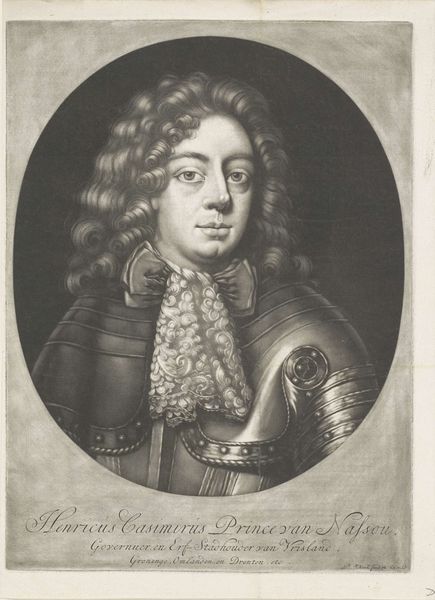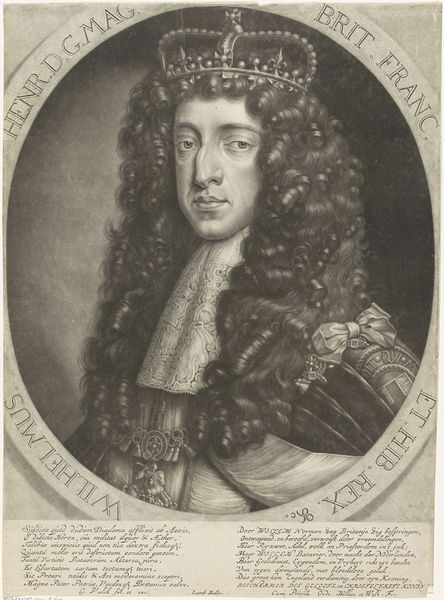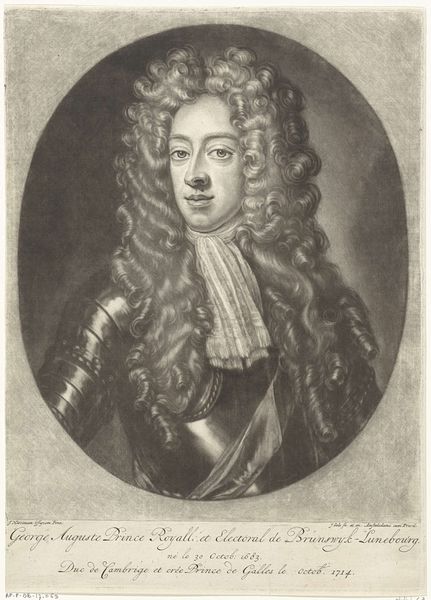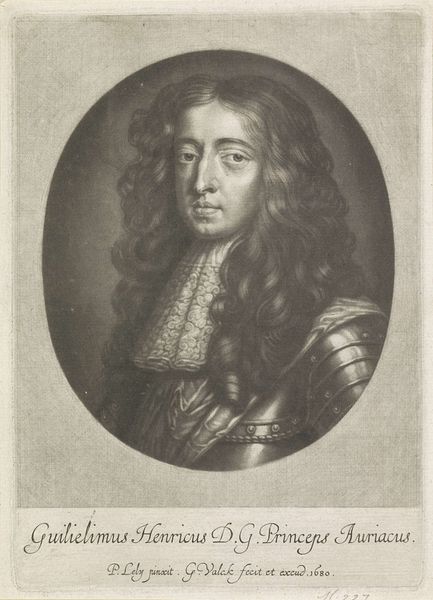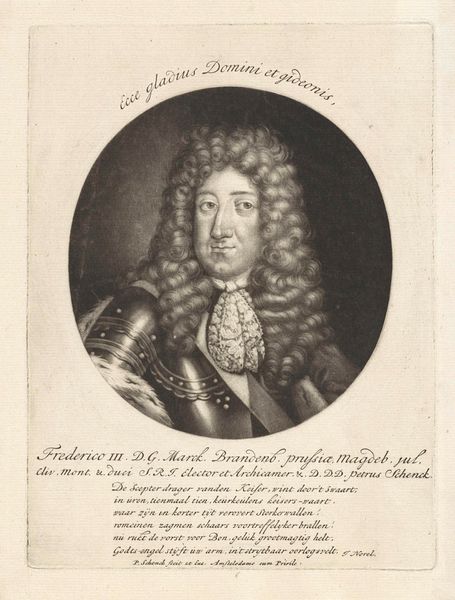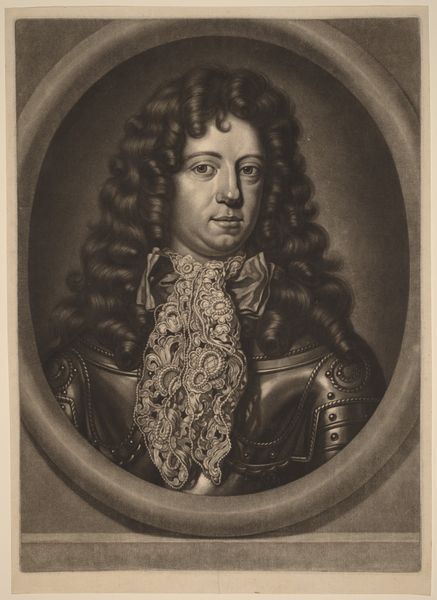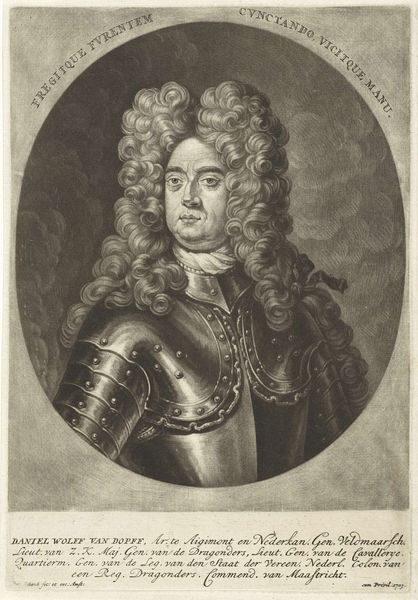
print, metal, engraving
#
portrait
#
baroque
# print
#
metal
#
old engraving style
#
engraving
Dimensions: height 168 mm, width 125 mm
Copyright: Rijks Museum: Open Domain
Matthijs van Marebeek made this print of William the Third, Prince of Orange in the late 17th century. As a print, this image could be widely circulated, playing a key role in shaping public perceptions. William, adorned with a wig, lace collar, and royal regalia, projects an image of power and authority. The Latin inscription proclaims him King of England, Scotland, France, and Ireland, reflecting the complex political landscape of the time. The print was made during a period of intense political and religious conflict in Europe, particularly between Protestant and Catholic factions. William, a Protestant, played a central role in these conflicts, particularly in England's Glorious Revolution of 1688, which deposed the Catholic King James II. To fully understand this print, one could consult historical documents, political pamphlets, and other visual representations of William. It’s a potent reminder that art never exists in a vacuum, and social, political, and institutional contexts are crucial to interpretation.
Comments
No comments
Be the first to comment and join the conversation on the ultimate creative platform.
